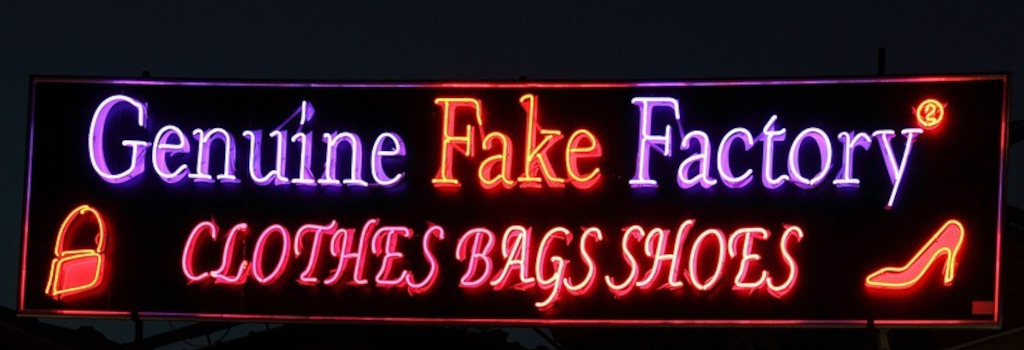
It’s all about establishing and pushing your brand equity to keep your competition at bay
Last month, we covered how in the era of #FakeNews and #CancelCulture, brands need to have their wits about them more than ever when it comes to content! We highlighted that “with a diverse range of social and comms platforms now live, keeping a constant watchful eye on what people are saying about your brand is crucial.” But what happens in the case of a brand or content copycat? When another brand directly imitates your USP, or replicates your content? Well, if we follow in the steps of popular luxury hair care brand Olaplex, you use it to your advantage!
The lines of real and fake ads are becoming more blurred by the day. As highlighted by Rory McEntee in a recent piece for Marketing Week “As brand custodians, we should have accountability and control over how our brand is portrayed to consumers. But the problem is that fake ads have become so common, and are so professionally produced, that we have now reached a point where people can’t tell the difference between real and fake advertising.”
OK, you’re wondering what Olaplex and B2B organizations have to do with one another. Well while the product and audience are different, the principles and how to overcome and learn from a “copycat” remain the same for B2B and B2C.
Let me explain Olaplex’s recent marketing campaign “OlaDupé.”
We’re in the era of “dupes” and fake products and services – people are regularly on the hunt for their favorite goods but at a fraction of the price. Rather than fighting the trend, Olaplex embraced it! The brand decided that as more and more people were searching for imitations of its products (your average bottle of Olaplex No.3 will set you back nearly $30) it would rebrand, temporarily. It has been a difficult year for Olaplex, with its sales crashing by nearly half in the second quarter of 2023. All at a time when the company has been grappling with a lawsuit filed against it in February 2023 for causing hair loss and scalp blisters fortunately now all dismissed!
Introducing, “OlaDupé” a direct “dupe” of its best-selling No.3 hair perfector, available to purchase at oladupe.com but for a fraction of the price. Of course, news flash, it was Olaplex all along, but with a new message – its products cannot be replicated, the ingredients are premier, and with a unique blend of 160 ingredients it is worth the $30 per bottle. Here lies their brand equity.
“Imitation is the biggest form of flattery!” The words of Olaplex CEO. But your brand equity must be more powerful than the dupe.
The three tactics that helped Olaplex pull off its “dupe” marketing campaign
- Trend jacking and appeasing SEO: Do your research on the trending topic: Olaplex for example, identified that the trending hashtag on TikTok “#OlaplexDupe” had raked in 30.4 million+ searches – the company needed to tap into this trending hashtag.
- In B2B, trend jacking is all about looking for industry issues and pain points felt by businesses today – then looking at how businesses can be helpful to their audience. Whether this includes sustainability issues, new forms of energy and power, new models of manufacturing and construction. Then turning this into their own brand equity, then this should become the peg to hang their trend jacking content on.
- From an SEO perspective, the same hashtag theory applies to B2B – it’s about choosing your words carefully when looking to rank on Google – remember that your audience may be human, but the SEO gods live on the internet – just look at NYC based Thai restaurant simply named “Thai Food Near Me”.
- In B2B, we often come across content guidelines from publications that highlight the importance of SEO, and it’s why many integrate focus key phrases – search terms that you most want your page to rank for, so when people search for that keyword or phrase it appears high up in Google ranks.
- Remember, this is no simple job. So think carefully – SEO must marry your brand equity otherwise you might well be pushing a competitors solution too.
- Harness the power of influencers: Olaplex used popular TikTok creators to break the news and reveal that they had found a direct Olaplex dupe.
- Of course, millions of people fell for the marketing ploy – in fact #OlaDupé managed to rake in 26.M views just on TikTok alone.
- These influencers were credible voices – experts in their field, well-versed with talking all things beauty, hair, and makeup.
- From B2B perspective, the principle is the same – ‘word of mouth’ really does hold its weight, and a well-respected expert individual in that industry will be vital for spreading your message. So, get those customer evangelists talking – one good one a year will do!
- Unified storytelling: Olaplex ensured messaging was replicated via each of these influencers. The same language was used, key words were spoken by each influencer to keep a unified story – in this case, it not only made it believable, but it told a story.
- It keeps brand authenticity, and shows the value of your product or service to avoid people going elsewhere!
- My colleague Jamie Kightley recently covered storytelling through the “Swift” and “Queen B” lens. While Jamie’s head might have been a “blank space” when it came to recent TayTay songs, he did highlight the power of compelling content – “Every piece of content counts and needs to relate to a key company message – regardless of the medium.”
B2B marketers take note!
Remember – it’s all about establishing and building your brand equity to keep the competition at bay.
Georgia Harris is PR Lead Themes at IBA International.

Leave a comment